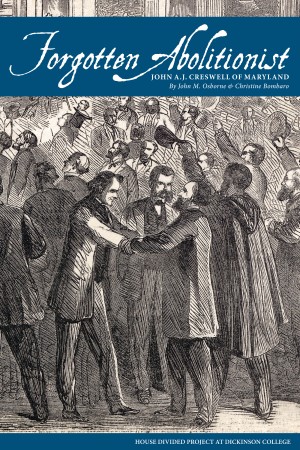During Christmas week in 1936, a ninety-two-year-old woman from Washington, D.C. created a local incident that drew the attention of the Washington Post. The woman had walked a few miles out to the Soldiers’ Home, a federal retirement community for military veterans, a location that she considered the birthplace of emancipation. Mrs. Thomas Chase, as the Washington Post called her in its subsequent report, was hoping to see the room where Lincoln reportedly drafted the Emancipation Proclamation. Chase had once been a former slave named Anna Harrison from Caroline County, Virginia who had arrived in the capital in the spring of 1862 as a “contraband” or wartime fugitive.
“I used to see Mr. Lincoln almost every day riding out to the Soldiers’ Home that summer,” Anna Harrison Chase recalled for the startled reporter. “Of course, we did not know what he was doing, but he was such a great man. And I can remember how we laughed and cried when he set the slaves free.”
Local tradition maintained that President Lincoln wrote the September 22, 1862 proclamation announcing his emancipation policy at his cottage on the grounds of the Soldiers’ Home. Scholars have since argued over that claim, but the former contraband believed it fiercely and wanted to see the room where Lincoln freed her people at least once before she died.
Anna Harrison had been 18 at the time her escape to freedom. “Our old master and missus were dead, and we heard that our young master had been killed in the war,” she recalled. “So we hitched up the ox carts and I led my family away to the Free State” [meaning behind Union lines]. The family traveled by ox cart to Fredericksburg, Virginia and then by train to Washington.
Eventually, Anna Harrison married Thomas Chase who had been a slave in Annapolis, Maryland. He was self-educated and became a noted member of the House of Delegates in the District of Columbia during the 1870s. During the 1880s, he graduated from Howard University School of Law and became an attorney. He died in 1905. Anna H. Chase, known as “Mother Chase,” lived until 1938, just two years after her Christmas pilgrimage to the Soldiers’ Home.
Mother Chase’s journey to the Soldiers’ Home generated an admiring profile in the Sunday edition of the Washington Post on December 27, 1936. The story began when the 92-year-old ex-slave startled the residents of the retirement community. Former First Sergeant James Davidson, age 64, told the Post reporter, “Not many people come out here in the winter.” But unlike many others, Anna Harrison Chase was determined to bear personal witness to what she considered the great act of American history.



